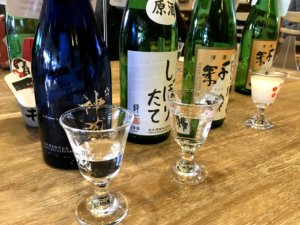In the previous article, we introduced the basics of moto (sake mother). In this article, we will explain each of the various types of moto in detail.
History of the Sokujokeishubo Making Method
Sokujokeishubo method , the fast brewing yeast yeast is a relatively new method that started in the late Meiji era (1868-1912).
Before the birth of the Sokujokeishubo method, sake brewers did not use highly polished rice as they do today. In addition, the low fermentation power of koji rice made it difficult for the rice to dissolve during fermentation, and the process of making a yeast strainer was a particularly time-consuming and hard labor-intensive process.
Around 1900, with the advancement of sake brewing technology and machinery, sokujokeishubo method was developed to make sake more efficient and safer, while eliminating the heavy workload.
Today, about 90% of sake is made using the sokujokeishubo method, but at the time when the technology was not yet advanced, it was a revolutimonary method that shocked the sake industry.
Regular Fast Brewing Moto Making Method
Of all the fast brewing types, the main type is the regular fast brewing yeast, 普通速醸酛(ふつうそくじょうもと, futsusokujomoto)
As mentioned in the previous article, yeast is easily eliminated when combined with other microorganisms, in other words, it is weak against germs. On the other hand, it has a characteristic of being resistant to acidity, and general bacteria cannot grow at the acidity at which yeast grows (means it is weak against acidity).
In other words, if moto is made acidic, it is possible to create an optimal environment for the growth of yeast, where bacteria cannot grow. This is where lactic acid comes into play.
In the case of a sake brewing process, the lactic acid produced by lactobacilli by breaking down sugar is used, whereas in the case of a fast brewing process, the lactic acid already produced for brewing is added.
The end result is the same lactic acid, but how it is produced is different.
In the fast brewing method, the process of lactic acid production by lactic acid bacteria can be omitted. While kimoto method takes about one month for the sake brewing process, it takes about two weeks for the fast brewing method.
This method also raises the acidity of the yeast at once, preventing the invasion and growth of bacteria and ensuring safe and stable yeast production.
In the sake mother, where the acidity is increased by lactic acid, healthy yeast is cultivated in large quantities, resulting in a moto with a large number of yeast.
Before the development of the fast brewing method , sake brewing relied on naturally occurring microorganisms, making it very difficult to control the temperature, and a cool environment was essential. The lactic acid produced for brewing is relatively unaffected by temperature changes, and one of its major advantages is that it allows brewing to proceed at a constant quality level.
Sake brewed using the fast brewing method is said to be more aromatic and to have a well-balanced, clean taste. Most modern sake breweries use the fast brewing method because it is easier to achieve the desired flavor.
High-Temperature Saccharification Moto Method
As the name suggests, high-temperature saccharification is a method in which saccharification is carried out at once at high temperatures. This is one of the fast brewing type of sake brewers developed around 1940.
In the case of regular fast brewing, the first week after the addition of lactic acid is devoted to saccharification of starch by koji mold to prepare enough sugar for the yeast.
In the latter half of the week, the yeast grows by feeding on the sugars produced in the first half.
On the other hand, in the high-temperature saccharification process, the first half of saccharification is completed in only one day at a high temperature, so the sake mother can be completed in about one week to 10 days. (Lactic acid is added during cooling after saccharification.)
And the most important point of high-temperature saccharification yeast is to keep the saccharification temperature at around 55°C for 5 to 8 hours.
Although enzymes are weak at high temperatures, saccharification proceeds at around 55°C. Also, general bacteria are sterilized at this temperature, so saccharification can proceed efficiently.
The greatest advantage is efficiency, as it saves time and labor, but there are risks associated with this.
For example, if the temperature is higher than 55°C, the koji bacteria die, saccharification does not proceed properly, and yeast cannot propagate.
Conversely, if the temperature is lower than 55°C, it becomes a temperature zone where bacteria can easily grow and the yeast can become contaminated.
If the target temperature can be maintained at a constant environment, you can see that this is an excellent method of moto yeast making.
Yeast grown in high-temperature saccharification yeast often lose fermentation power in the latter half of the unrefined sake, and the quality of sake tends to be even lighter than that of regular fast brewing yeast, with less miscellaneous flavors.
For this reason, high-temperature saccharification yeast is often used for low-temperature, long-fermentation ginjo-style sake in the Kyushu region in Japan where the climate is warmer.
In the next article, we will talk about yamahaimoto (山廃酛)and kimoto(生酛).







